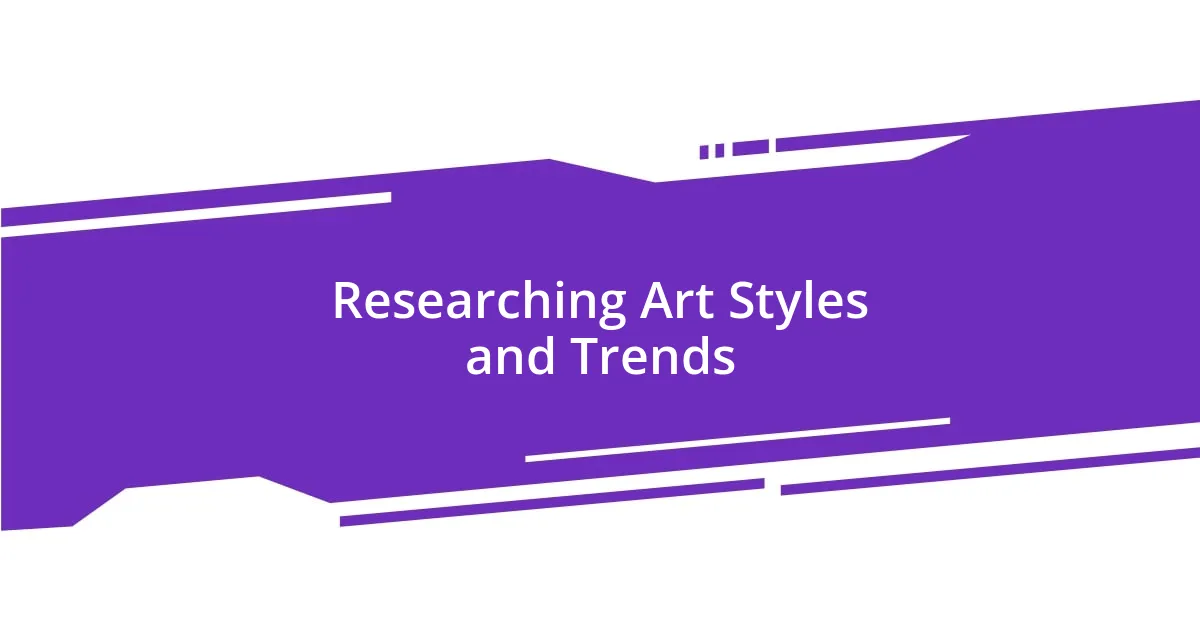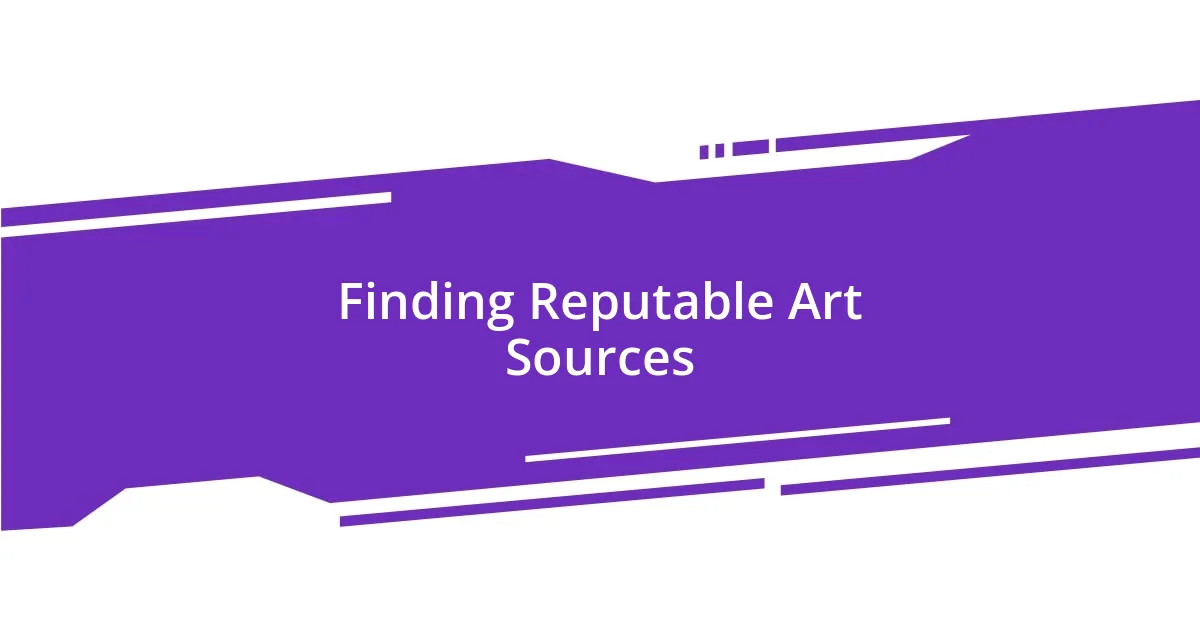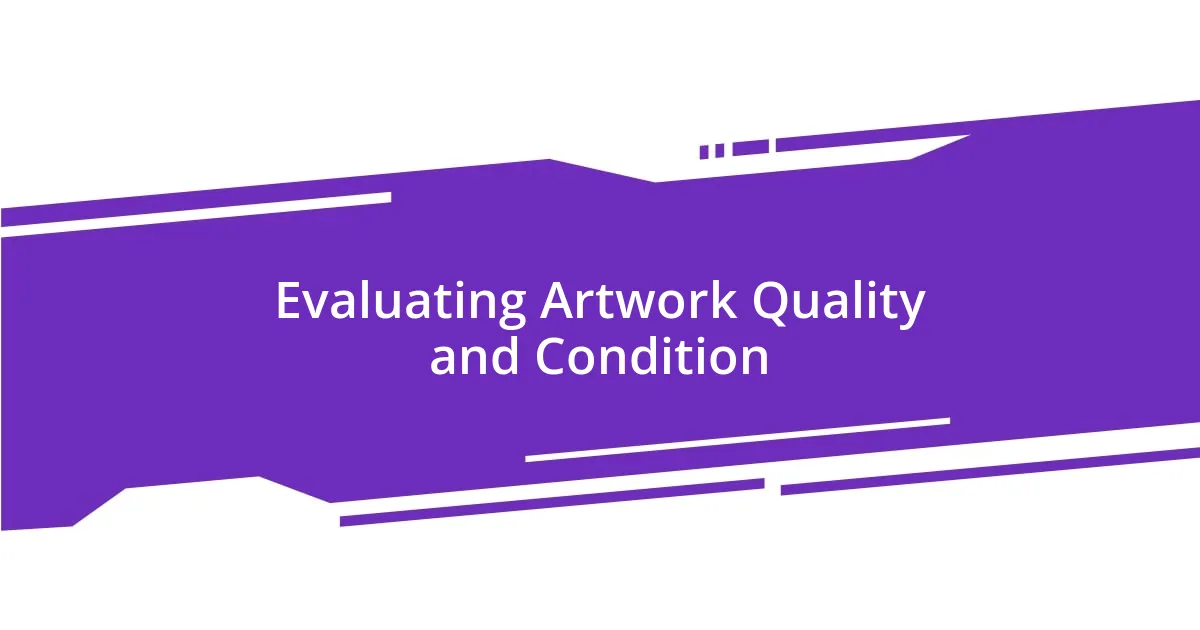Key takeaways:
- Understanding your personal aesthetic involves reflecting on emotional connections to art and how it represents your identity.
- Defining an art budget is crucial; consider overall spending limits, additional costs, and whether to prioritize quality or quantity.
- Researching art styles and trends enhances informed choices, helping you connect on a deeper level with chosen pieces.
- Trust your instincts when making purchase decisions, balancing personal taste with budget considerations to find fulfilling pieces.

Understanding Your Personal Aesthetic
Understanding your personal aesthetic is like embarking on a journey of self-discovery. I recall the moment I realized that the art I resonated with was often tied to memories and emotions—like a vibrant painting that transported me back to a summer spent at my grandmother’s house. What art pieces evoke that deep sense of nostalgia for you?
When I was curating my collection, I found it helpful to pay attention to colors and themes that naturally drew my eye. I remember walking through galleries, feeling an inexplicable connection to certain pieces; they spoke to my soul in a way words couldn’t. Have you noticed similar patterns in your preferences?
It’s also essential to consider how your aesthetic reflects who you are. For instance, I discovered that my love for abstract art mirrored my desire for freedom and exploration. What does your choice in art say about you? Taking the time to reflect on this can lead to a more genuine selection that not only beautifies your space but also tells your unique story.

Defining Your Budget for Art
Defining your budget for art is a crucial step in the purchasing process. I’ve learned through trial and error that art can range from affordable local pieces to high-end gallery items. The first time I splurged on a painting, I felt a mix of excitement and gulp-inducing anxiety, reminding me that it’s important to determine what I’m truly willing to spend before getting too attached to an artwork.
Here are some key considerations to help you establish your art budget:
- Determine Your Overall Budget: Know how much you’re willing to invest without compromising other financial priorities.
- Research Price Ranges: Explore various artists, styles, and galleries to understand the market and what similar pieces typically cost.
- Consider Additional Costs: Account for framing, shipping, and installation, which can add up.
- Set Priorities: Decide if you prefer to invest in a few high-quality pieces or a larger collection of affordable art.
- Be Open to Negotiation: Sometimes, artists are willing to work within your budget, especially at art fairs or galleries.
Embracing clear budgeting strategies has not only made my art purchases less stressful but has also allowed me to enjoy my collection without the nagging worry of overspending.

Researching Art Styles and Trends
Researching different art styles and trends is essential in finding pieces that resonate with you. I remember the first time I dove into art history resources; it felt like opening a treasure chest filled with creativity. I stumbled across movements like Impressionism, which instantly captivated me with its blend of color and light. Have you explored what styles speak to your heart?
As I deepened my research, I began to identify how contemporary trends often reflect current societal themes. When I watched documentaries about street art and its roots in urban activism, I felt a strong connection to the messages being conveyed. It’s fascinating how styles evolve, right? Looking into these trends can lead to a more informed and emotionally connected choice in your collection.
To further illustrate the various art styles and trends, I’ve created a brief comparison table that highlights several styles alongside their defining characteristics. This can serve as a handy reference as you dive into your research.
| Art Style | Characteristics |
|---|---|
| Impressionism | Focus on light, loose brushwork, capturing moments |
| Abstract Art | Non-representational, emotional expression, emphasis on color |
| Street Art | Public spaces, social commentary, vibrant and often provocative |
| Realism | Depicts everyday life, detailed and naturalistic |
| Surrealism | Dream-like scenarios, imaginative and often bizarre |

Finding Reputable Art Sources
Finding reputable art sources can significantly impact your art-buying journey. Over the years, I’ve found that visiting local galleries and art fairs is a fantastic way to connect with artists and their work. One memorable experience was attending a community art fair where I discovered emerging talents that filled my home with warmth and creativity. Have you ever had that moment when you realize the connection you can forge with an artist’s story?
Online platforms can also serve as valuable resources, but I urge caution. I’ve stumbled upon some beautiful pieces on websites that seemed reputable at first glance, only to discover later that the artwork wasn’t exactly what was advertised. Researching an artist’s background and checking reviews from previous buyers can help ensure you’re getting quality work and ethical practices. What’s been your experience with online art shopping?
Additionally, joining local art organizations or artist groups has broadened my network and informed my choices. It’s not just about buying art; it’s about fostering a community where shared insights and recommendations flow freely. I once met a gallery owner who not only has an eye for stunning pieces but also understands the value of trust in the art market. Connecting with knowledgeable individuals can make all the difference in your search for reputable art sources.

Evaluating Artwork Quality and Condition
To evaluate the quality and condition of artwork, I often find myself examining not just the piece itself, but its overall presentation. I recall a time when I was drawn to a striking painting at a local gallery, only to notice a small scratch on the surface. That tiny imperfection made me rethink my desire for the piece. Have you ever had a similar experience where a minor flaw changed your perception of an artwork?
Condition is key in the art world, as it can significantly impact both the value and your enjoyment of the piece. I once acquired a stunning print that I adored, but it was framed poorly, and over time, the glass caused a few subtle scuffs. I learned that even a great artwork can lose its charm if not properly cared for. How does a piece’s condition affect your emotional connection to it? Each mark, scratch, or stain tells a story, but I believe a pristine condition allows the true beauty of the art to shine through.
When assessing artwork, I also pay attention to authenticity markers, such as signatures and provenance. For instance, I once came across a canvas that lacked documentation, raising my eyebrows. While I was initially taken in by its beauty, the lack of a reliable history made me hesitant to invest. Isn’t it reassuring to know you’re bringing home a unique piece with a story behind it? Just like we cherish our own stories, I think every artwork deserves the same recognition.

Considering Space and Placement
When considering space and placement for your artwork, I find it essential to visualize how each piece interacts with its surroundings. I once placed a large abstract canvas in a dim corner, thinking it would inspire, but instead, it felt lost in the shadows. Have you ever realized that the right lighting and backdrop can completely change how artwork resonates within a space? The effort you put into placement can enhance not just the art itself but the entire room.
I’ve learned that scale plays a significant role in art placement. For instance, hanging a small piece above a large sofa can create an imbalanced feel, while a larger work can tie the space together beautifully. There was a time I hung a delicate sketch above a bulky cabinet, and it felt overwhelmed by its surroundings. It made me rethink my approach to proportion and really pay attention to how each piece speaks to the furniture and decor around it. What type of balance do you strive for in your own art displays?
Lastly, I often consider the emotional response the chosen placement elicits. I once rotated a few pieces based on the time of day they were viewed; one specific painting captured the afternoon sunlight perfectly and became a sanctuary at that hour. It’s fascinating how the light, angle, and context can transform how we experience art daily. Have you noticed this in your spaces? Each artwork can tell a different story depending on where it sits, and I’ve found that intentional placement can breathe new life into even the most familiar pieces.

Making Your Final Purchase Decision
When it comes to making the final purchase decision on artwork, I believe it’s crucial to trust your instincts. There was a time when I hesitated on a vibrant piece that just spoke to me, and I still think about how I nearly missed out on it. Have you felt that magnetic pull towards a piece, only to second-guess yourself later? I’ve learned that if a piece resonates with you, it’s often worth taking the plunge.
I also assess how the potential purchase aligns with my personal taste and the story I want to convey in my space. While browsing a gallery once, I found myself captivated by a piece that felt wildly different from my usual choices. It challenged me to rethink my aesthetic. Is there a piece out there that makes you question your usual preferences? I’ve discovered that bringing home an unexpected artwork can enrich my environment and even spark new conversations.
Finally, I always keep my budget in mind as I assess the artwork. Investing in art can be exhilarating, but I remember splurging on a piece that I later realized didn’t quite fit my vision or space. It’s vital to balance passion and practicality. How do you find that sweet spot between your heart’s desire and your financial reality? For me, a clear budget often shields me from regret and leads to more fulfilling choices.














